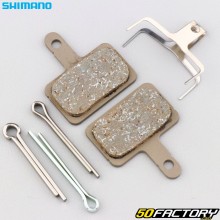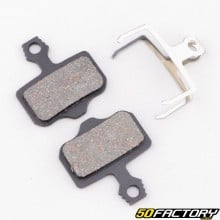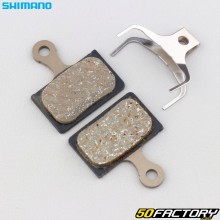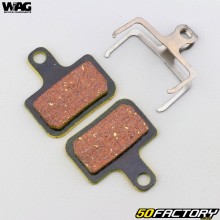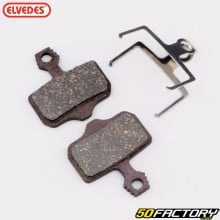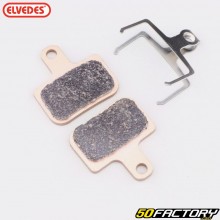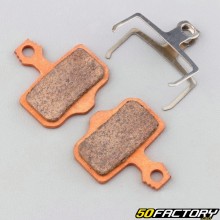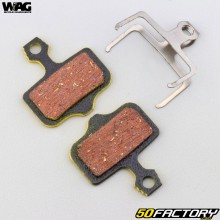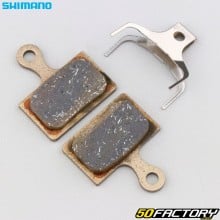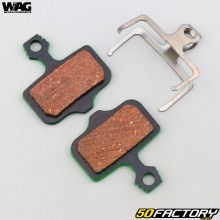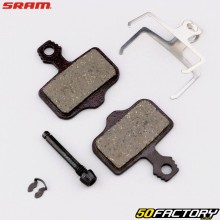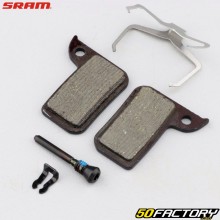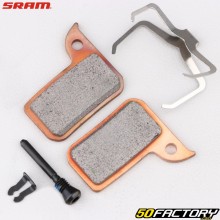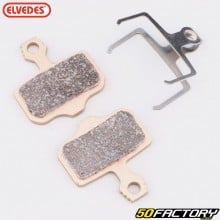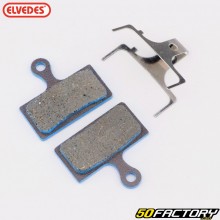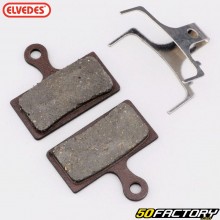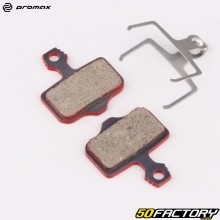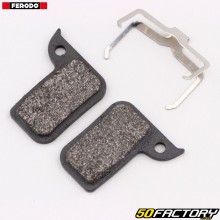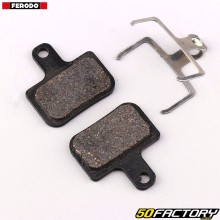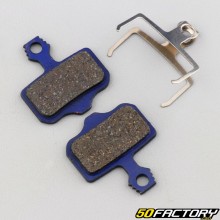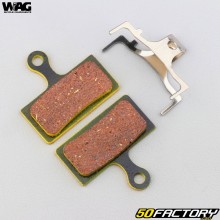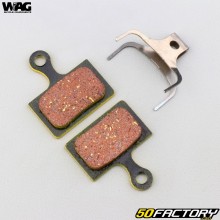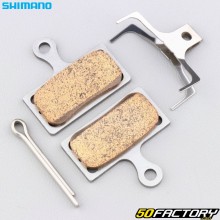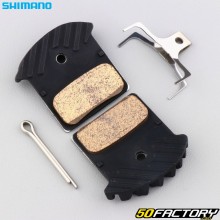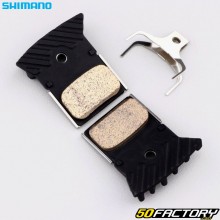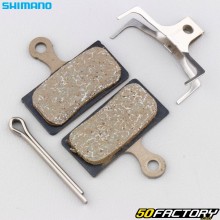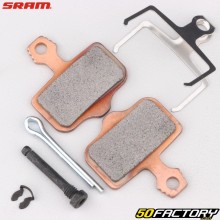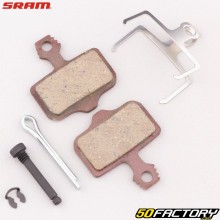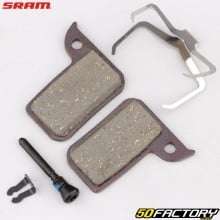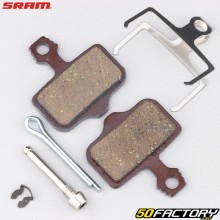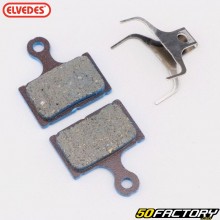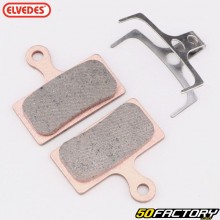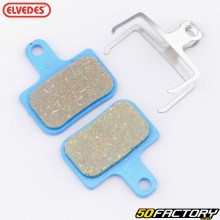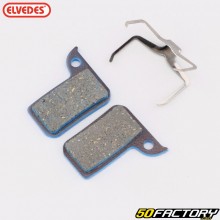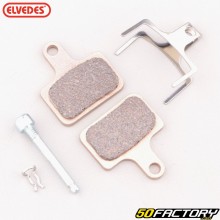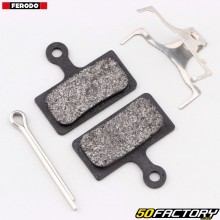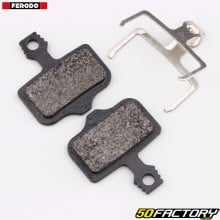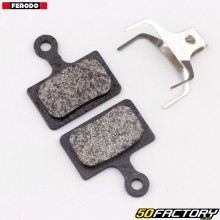 Brake pads
Brake pads
- STOCK EXHAUSTED7€80
- IN STOCK5€30
- IN STOCK22€30
- IN STOCK9€90
-
-
-
- IN STOCK8€70
-
- IN STOCK14€90
- IN STOCK11€60
- IN STOCK14€00
- IN STOCK27€50
- IN STOCK22€70
-
-
-
- STOCK EXHAUSTED9€90
-
- IN STOCK15€20
-
-
- IN STOCK7€10
-
-
- IN STOCK18€10
- IN STOCK30€50
- IN STOCK28€80
- IN STOCK10€70
- IN STOCK22€50
-
-
- IN STOCK22€90
-
-
-
-
-
-
-
-
-
Introduction to Gravel and Cyclo Brake Padscross
Choosing brake pads for a gravel or cyclo bikecross is an important technical decision that can significantly impact your driving experience, so it is important to understand how they work and what their specificities are.
The role of brake pads in braking
Brake pads are crucial parts of the braking system. They squeeze the brake discs to stop or slow down the bike. The quality and type of pads directly influence the braking efficiency, the durability of the components and the safety of the cyclist. Their choice is therefore all the more important to ensure optimal performance and safe riding.
Specific features of gravel and cyclo padscross
Gravel and cyclo bikescross are designed for varied terrains, ranging from smooth roads to rough trails. Brake pads for these bikes must provide optimum grip and wear resistance in extreme conditions, such as mud, dust and humidity. As a result, their design and materials are specifically adapted to these requirements.
The different types of brake pads
There are several types of brake pads, each with specific characteristics that influence braking performance. The choice of pads depends on many factors, such as the type of bike, riding style and weather conditions. Here is an overview of the two main types of brake pads: resin pads and metal pads.
Resin brake pads
Resin brake pads, also called organic pads, are made from organic fibers and bonding resin. They are known for providing smooth and quiet braking. However, they wear out faster and tend to produce more brake dust.
Advantage: Less noise, better braking modulation.
Disadvantages: Faster wear, reduced performance par humid weather.
Metal brake pads
Metallic brake pads are made of sintered metal particles. They provide superior stopping power and durability, making them ideal for harsh conditions. However, they can be noisier and harsher on brake rotors.
Advantage: Durability, high performance under all conditions.
Disadvantages: Noise, faster disc wear.
It is important to note that braking performance depends not only on the type of pads, but also on their regular maintenance and timely replacement.
When and how to change brake pads
Signs that replacement is needed
Monitoring the condition of your brake pads is crucial to ensuring optimum performance. Signs of wear include reduced pad thickness, squealing noises, decreased stopping power, and a spongy feel at the brake lever. Regular inspection of the condition of your brake pads is essential to anticipate replacement and avoid safety issues.
Replacement procedure
Replacing brake pads on a gravel or mopedcross requires a few basic tools and a little know-how. Here are the steps to follow:
- Remove the wheel from the bike to access the pads.
- Remove the brake caliper.
- Remove the old brake pads.
- Clean the caliper and pistons with a clean rag.
- Install the new pads.
- Reassemble the caliper and replace the wheel.
- Test the brakes to make sure they are working properly.
It is also important to push the brake pistons back before installing the new pads. This ensures that they have enough room to accommodate the new pads, which are thicker than the old worn ones.
How to Choose the Right Brake Pads
Depending on the type of bike
The type of bike you ride will influence your choice of brake pads. Gravel and cyclo bikescross require pads that can handle varied conditions and rough terrain. Metal pads are often preferred for their durability and performance in these conditions. On the other hand, road and city bikes can benefit from using resin pads for smoother, quieter braking.
Depending on your driving style
Your riding style also plays a crucial role in choosing brake pads. If you are an aggressive rider who brakes often, metal pads will be more suitable. On the other hand, for a smoother ride, resin pads can offer better modulation. It is important to note that the choice of brake pads should also match your level of comfort and confidence when braking.
Depending on weather conditions
Weather conditions affect brake pad performance. Resin pads may be less effective in the rain, while metal pads maintain consistent performance in all conditions. It is therefore essential to choose pads that are suitable for the climates in which you ride most often. Don't forget to consider seasonal changes and local climate variations.
Depending on the make and model of the bike
Finally, the model and brand of your gravel or cyclocross can also influence the choice of brake pads. Some manufacturers specifically recommend the use of certain types of pads for their bike models. It is therefore essential to consult the bike manual or the manufacturer's website for specific recommendations.
Care instructions
Regular cleaning and maintenance
Regular maintenance of your brake pads is crucial to prolong their life and ensure optimal performance. Clean your brake pads and discs regularly to remove dirt and residue. Use specific brake cleaning products to avoid damaging the materials. Careful maintenance will also help maintain the precision and efficiency of your braking, which is essential for safety in gravel and cyclo.cross.
Precautions to take
When maintaining brake pads, it is important to take certain precautions. Avoid touching the friction surface of the pads with your fingers to avoid contaminating them. Check the thickness of the pads regularly and replace them if necessary. Finally, make sure the pads are properly aligned to avoid uneven wear.
Importance of regular maintenance
By keeping a close eye on the condition of the brake pads on your gravel or mopedcross and by performing regular maintenance, you can prevent potential brake problems before they occur. This can help you avoid dangerous situations while cycling. In addition to ensuring safety, proper maintenance helps maximize the life of your brake pads.






































